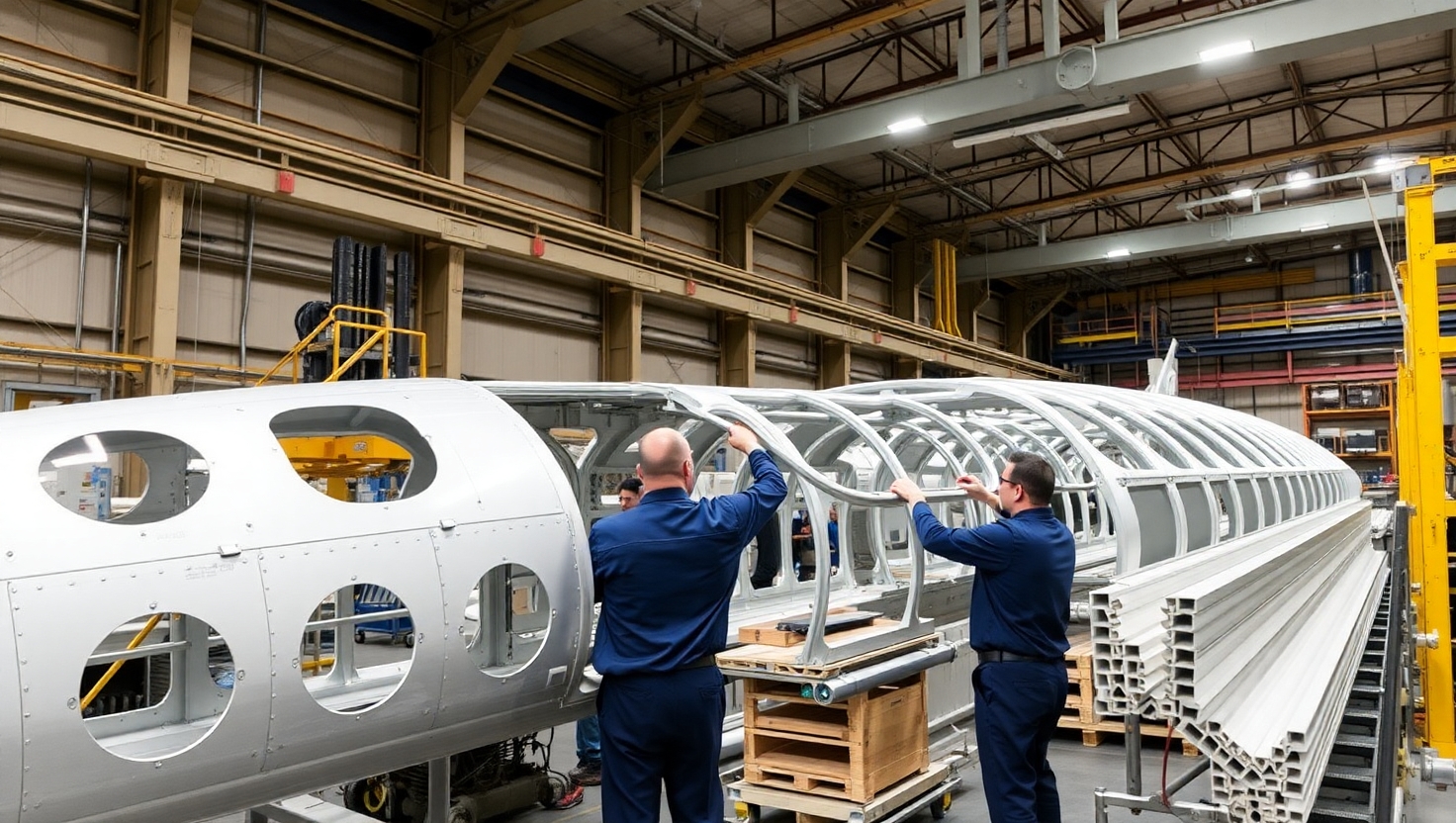Aerospace Applications of Aluminum Extrusions: Trends & Opportunities
Published by: ALUTimes | Date: July 18, 2025
Table of Contents
- Introduction
- Why Aluminum in Aerospace?
- Key Aerospace Applications
- Advantages of Aluminum Extrusions
- Aluminum Extrusions in Spacecraft
- Emerging Trends & Innovations
- Challenges and Material Alternatives
- The Future of Aerospace Aluminum
- Conclusion
- Disclaimer
Introduction
The aerospace industry is constantly pushing the boundaries of performance, fuel efficiency, and structural integrity. Aluminum extrusions have emerged as a key material in meeting these evolving demands. With their light weight, high strength-to-weight ratio, and ease of fabrication, aluminum extrusions are vital to aerospace manufacturing — from commercial aircraft to satellites and defense systems.
Why Aluminum in Aerospace?
Aluminum has long been favored in aerospace due to its ideal combination of strength, corrosion resistance, and light weight. Its alloys — particularly 2024, 6061, and 7075 — deliver excellent fatigue resistance and tensile strength. In extrusion form, these alloys allow engineers to create custom, complex profiles that match specific aircraft design requirements.
Key Aerospace Applications
- Fuselage Structures: Hollow aluminum extrusions form lightweight structural frames.
- Wing Components: Extrusions are used in wing spars and ribs to reduce weight without compromising strength.
- Landing Gear Housings: High-strength extrusions withstand dynamic stresses during landing.
- Satellite Chassis: Custom extruded panels provide precision and thermal management.
- Cargo Doors & Hatches: Complex extruded profiles allow for integrated seals and reduced parts.
Advantages of Aluminum Extrusions
- Weight Savings: Helps reduce aircraft fuel consumption and emissions.
- Design Flexibility: Complex shapes are easily produced to meet aerodynamic needs.
- Cost Efficiency: Lower manufacturing costs due to faster fabrication and reduced machining.
- Corrosion Resistance: Anodizing and coatings protect against harsh environments.
- Recyclability: Contributes to sustainability and circular manufacturing practices.
Aluminum Extrusions in Spacecraft
Space applications demand extreme performance. Aluminum extrusions are used for:
- Satellite structural frames and internal supports
- Racks and rails for payload deployment
- Thermal shielding structures
- Lightweight components for rovers and landers
The extrusion process ensures repeatability and consistency required for space-grade parts.
Emerging Trends & Innovations
- Topology-Optimized Profiles: Advanced software enables lighter, stronger cross-sections.
- Hybrid Materials: Aluminum paired with carbon fiber for superior stiffness and weight savings.
- 3D-Printed Dies: Faster prototyping and die development for aerospace profiles.
- AI in Quality Control: Automated inspection systems ensure aerospace-grade tolerances.
Challenges and Material Alternatives
While aluminum is versatile, it faces competition from composites and titanium in high-performance zones. Key challenges include:
- Limitations in extreme heat environments
- Fatigue resistance under long-term loading
- Machinability for ultra-thin sections
Nevertheless, advances in tempering, alloy development, and hybrid solutions are helping overcome these hurdles.
The Future of Aerospace Aluminum
Global air travel demand and the commercialization of space travel are driving a new era for aluminum extrusions. With sustainability becoming a priority, aerospace firms are turning to recycled aluminum and energy-efficient extrusion processes. Aluminum’s dominance is expected to grow as lightweighting, fuel economy, and high-volume production become central themes in aircraft design.
Conclusion
Aluminum extrusions are the backbone of modern aerospace innovation. Their lightweight properties, combined with structural strength and fabrication versatility, make them indispensable in the sky and beyond. As technology advances, aluminum will continue to play a pivotal role in redefining aerospace engineering.
Disclaimer
This article is for informational purposes only. Consult aerospace material experts for technical specifications and performance requirements before application.

